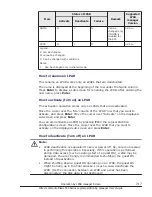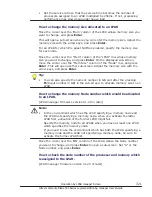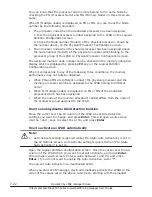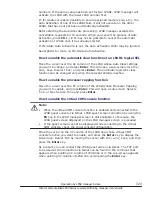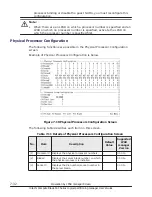
How to change the number of logical processors to assign to an
LPAR
Logical processor number can be changed when a target LPAR is deactivated.
Place the cursor on the intersection between the LPAR line to change the
logical processor number and Pro column, and press Enter to display a sub-
screen. Type the number of logical processors to configure, and press Enter
on the sub-screen.
Note:
•
The following shows the recommended value for the number of logical
processors to be assigned to LPARs in shared mode:
¢
Number of logical processors for one LPAR ≤ Number of physical
processors
¢
Total number of logical processors for all LPARs ≤ Number of physical
processors x 4
•
To run Windows on an LPAR with more than 64 logical processors defined,
enable the guest NUMA on the LPAR.
•
To ensure that an LPAR with more than 64 logical processors defined is
running, disable PRTE of the LPAR.
•
The guest OS on the LPAR might not operate normally if all the following
conditions are met:
- The guest OS is Linux.
- Hyper threading is enabled.
- The guest NUMA is enabled.
- The total number of NUMA nodes is 5 or more.
To avoid this problem, assign an even number of logical processors to
each NUMA node.
•
If all of the following conditions are met, do not assign the logical
processors more than half the number of physical processors belonging to
one socket.
¢
A 4-blade SMP configuration is made, or the forcible multiple-queue
scheduling is enabled.
The forcible multiple-queue scheduling can be specified by the HVM
management command (HvmSh) option. The forcible multiple-queue
scheduling is disabled by default.
¢
Processor in shared mode are allocated to the LPAR
¢
The guest OS is RHEL7.
The number of processors belonging to one socket is determined
depending on the types of installed processors and the hyper-threading
setting of the server blade. The following table provides an example.
Operation by LPAR manager Screen
7-19
Hitachi Compute Blade 500 Series Logical partitioning manager User's Guide













